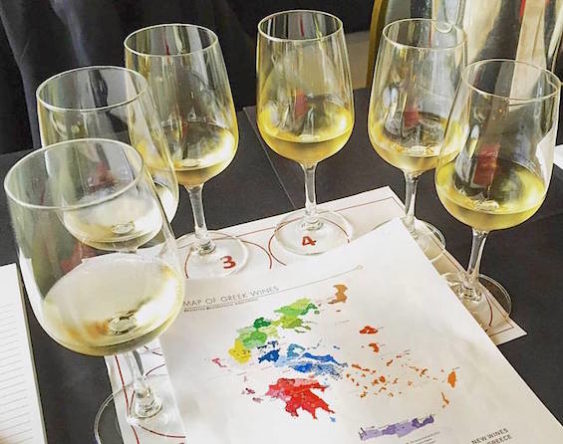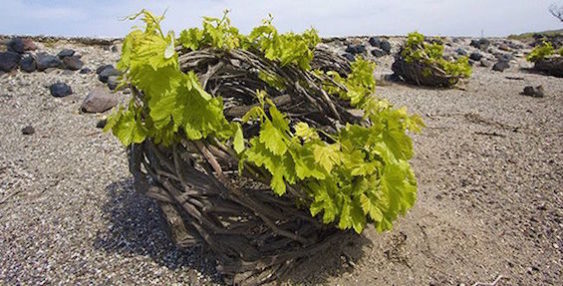Sick of Sauvignon Blanc? Over Chardonnay? Wouldn’t be caught dead with a glass of Pinot Grigio? As the mercury rises and summer kicks into full swing, you might be searching for some new white wines to whet your whistle and please your palate.
Search no further. Instead, stop by your local wine store and ask if they carry any Greek wines. Yes, they make wines in Greece! And they’ve been doing so for about 4,000 years now. Unfortunately, we just don’t get much of it in the US.

Looking for new white wines to try this summer? Go Greek!
According to the most recent figures from the National Interprofessional Organization of Vine and Wine, Greece produces just 1.2% of the world’s wine, ranking it 17th among wine-producing nations. Just 15% of it is imported to the US, accounting for a mere 0.3% of our total wine imports. That’s right, it’s less than a third of a percent of the wine we import to the country.
However, you can still find it more and more places. Greece has a rich and thriving wine industry, with around 800 wineries in the country overall, and over 300 indigenous varieties of grapes. So there’s some fabulous stuff to try, and you don’t have to settle for retsina, which tastes pine-fresh to me thanks to the resin used to coat the vessels that store it.
Here are the three main white-grape varieties you’re likely to encounter, and what you can expect to taste.
Assyrtiko: Primarily grown in the Aegean islands, this grape is quickly spreading to other Greek regions as well. Wines made from it tend to be crisp and light-bodied, but with some heft and complexity to them and a zing of minerality thanks to poor soils and cooling sea breezes.
Malagousia: Fun fact about the Malagousia grape variety – it almost went extinct before an enterprising young winemaker named Vangelis Gerovassilou brought it back from the brink in the 1980s. And thank goodness he did, because the wines made from it (by about 40 wineries these days) tend to exhibit tropical fruit flavors, floral and nutty aromas, and just the right balance of acid to keep them tasting fresh.
Moschofilero: Aromatic and intense, moschofilero-made wines have a lot of floral notes, spice and rich citrus flavors, but with a finesse that keeps them from becoming too cloying.

Assyrtiko vines cultivated in a typical “basket” style on Santorini.
I got to try about a dozen Greek wines, both red and white, during a tasting put on by New Wines of Greece and Cava Spiliadis a couple weeks ago. I was delighted by both the diversity and the quality of the wines we got to try, and I think you will be too. Here are four to try this summer.
Ktima Biblia Chora, Areti White: This white wine is made from 100% Assyrtiko from a vineyard in a region in Greek’s northeast along the Aegean Sea. The notes of lemon, grapefruit and almond are livened up by a jolt of tartaric acid which keeps the wine fresh and light on the palate. Try it with fresh seafood or grilled fish.
Ktima Tselepos Canava Chrissou: Another 100% Assyrtiko white, this one comes from the famous island of Santorini. It’s a delicious contrast to the Areti, with flavors of stone fruits like nectarine and apricot, as well as a tongue-tingling minerality thanks to the ashy soils of the island and the day-to-night temperature differentials. It should go great with oysters on the half shell.
Ktima Tselepos Mantinia: Also by Teselepos, this wine is made from 100% Moschofilero grapes in the Mantinia appellation of the Peloponnese. This is a more aromatic wine I liken to an Argentine Torrontès with dominant flavors like mandarin orange, white peach and honeysuckle. Try it with heavier fish dishes.
Ktima Gerovassiliou Malagousia: Made from 100% Malagousia by the man who saved the variety from extinction, this wine is redolent with tropical flavors like mango and pineapple, zesty spices like white pepper and ginger, and a hint of citrus as well. It comes from a region right along the coast in northeast Greece. Drink it with summer pasta dishes or fresh grilled veggies.

